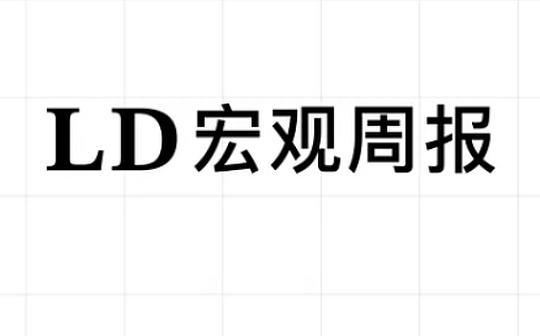
Market summary
In terms of US stocks, although Tesla, Apple and Google have performed poorly this year among the “Big Seven” stocks, other stocks such as Nvidia and Meta have performed strongly, and the overall market continues to hit new highs.However, chip stocks experienced a sharp pullback on Friday, with NVDA showing its largest single-day drop in more than nine months -5.6%. Considering that Nvidia’s stock price rose by 5.1% earlier in the session and AMD rose by 7.5%, the market seems to beShows a tendency to make profits.
As AI currently dominates the positive sentiment of the entire market, chip stocks lead the entire risk asset market, and NVDA takes the lead, so we must pay close attention to the progress of this stock.Of course, it is difficult to find fault with the company’s fundamentals at present. The valuation is high but not exaggerated. The main bearish views are as follows:
-
Supply is catching up with demand.Nvidia chip delivery time has been shortened from up to 11 months to 3 months, indicating improved supply, which may affect its sales growth.
-
Facing more intense competition.Because not only AMD is gradually making progress, but more importantly, Nvidia’s main customers, including cloud service providers and Tesla, are designing independent AI chips.
-
Technical callback.Driven by technology stocks, the Nasdaq and S&P index have seen huge gains, and the market is afraid of highs.If the Fed makes unexpected moves, it may cause a sharp drop in technology stocks.
-
Too much profitable order.As the stock price has been rising unilaterally, some profitable investors may take profit after the upcoming GTC meeting, causing the stock price to pull back.

BTC and gold both set new record highs last week.In the recent rise in Bitcoin and gold prices, the interpretation of the traditional framework is obviously insufficient, the U.S. Treasury bond interest rates and the U.S. dollar exchange rate have only slightly declined, and there is no obvious sign of a risk aversion sentiment.The logic of alternatives to existing fiat currency systems is dominating these alternative investment markets.
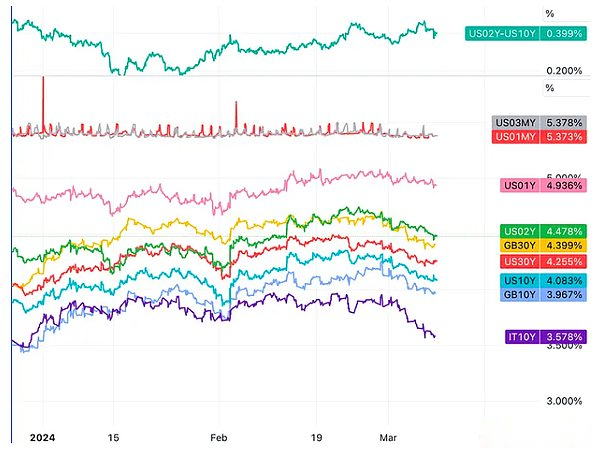
Friday’s mixed non-farm data was not enough to change too many market expectations, but it was generally understood as a dovish signal, which advanced the market’s expected time for the Fed rate cut.The interest rate market yield fell slightly, and stocks rose first and then fell.Goldman Sachs believes that given the positive employment data and interest rate cuts, this pullback is a good buying opportunity.The slowdown in wage growth should be a positive signal of the CPI data this Tuesday.
Cryptocurrency
BTC ETF almost tied with GLD
Spot Bitcoin ETFs recently listed in the U.S. continued to absorb Bitcoin last week — currently holding about 4% of 21 million Bitcoins, worth $54.6 billion, almost tied for the $56 billion AUM of the largest gold ETF GLD.
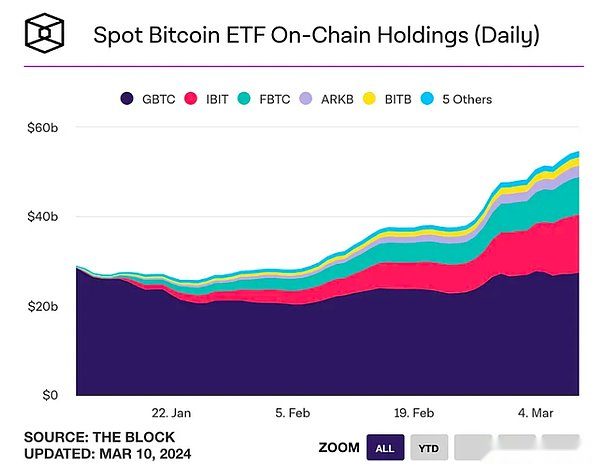
This week, BlackRock applied to the SEC for an additional spot Bitcoin ETF exposure to its AMU’s $18 billion Global Allocation Fund and AUM’s $36.7 billion Strategic Income Opportunities Fund, according to a public filing.
These news shows that a new trend has just begun, that is, the allocation of passive asset management.These asset management plans will allocate BTC as an alternative asset into the portfolio, and a considerable number of asset management will adopt a fixed proportional allocation strategy, such as a fixed 1% AUM ratio, and reduce holdings if they exceed the portfolio every quarter, less thanJust increase your holdings. These strategies often do not consider the absolute valuation of BTC, which will greatly increase the thickness of the BTC market.
According to our estimates, the total size of open-end funds with potentially configurable BTC is US$9.7 trillion. Conservative assuming that only 0.5% to 1% will be allocated to BTC, it may bring in US$48.5 billion to US$97 billion inflows.
If we assume that the supply and demand of the existing BTC market is balanced, and do not consider the transfer of the existing stock, and only consider global institutional management [new] capital allocation part to the BTC market, conservatively assume that 0.5% of the newly added allocation corresponds to the capital flow of each new output BTC this yearIt may also reach $174,000. Although this cannot be used as an accurate reference, it does show the large potential inflow of funds.
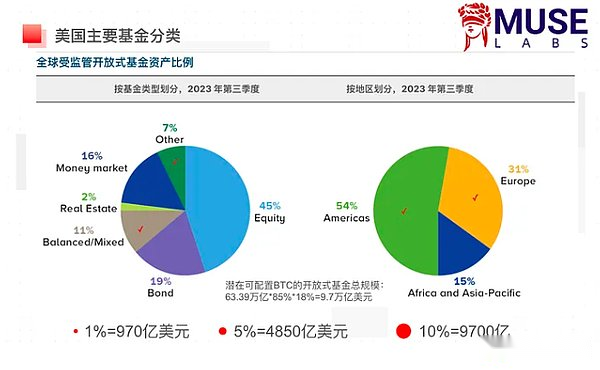
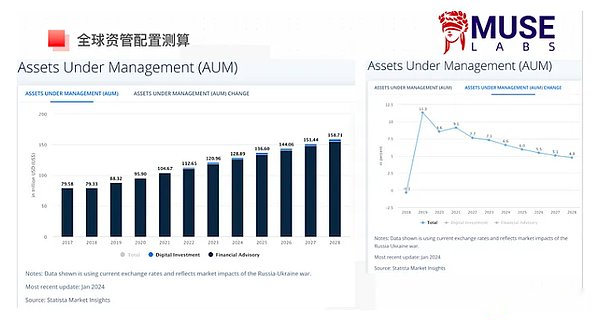
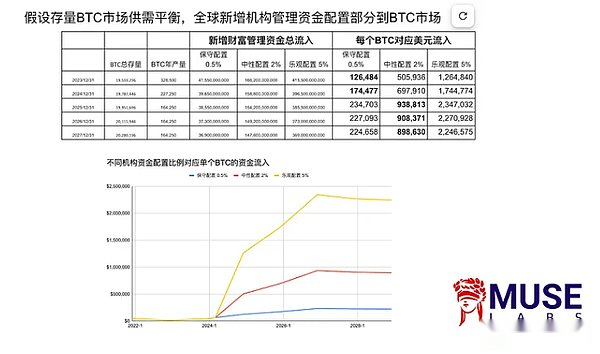

10X Research founder and CEO Markus Thielen posted a message on Saturday to remind short-term risks. He believes that the Bitcoin/cryptocurrency market is currently overheating and potential downside risk consolidation should be managed with caution.U.S. ETF traffic is no longer the main driver of Bitcoin.
A week of macro events
Global central banks are currently on the verge of waiting:
The ECB and the Bank of Canada adopted a wait-and-see attitude in March, emphasizing data dependence.The ECB expects both growth in 2024 and core inflation in 2025 to lower.
It is expected that by mid-2024, most major central banks will begin to cut interest rates, with global policy interest rates falling by an average of 1.4 percentage points.
Europe’s rate cuts may be faster than the United States:
According to historical circumstances, central banks of developed countries usually cut interest rates three times in a row during soft landing period, and then slow down.Rate cuts tend to accelerate if inflation is below target and economic activity deteriorates or interest rates are well above neutral levels.
Employment and income growth:
U.S. employment rose by 275,000 in February, significantly exceeding the expected 200,000.Although the number of jobs increased in February seems optimistic, the weakness of the household survey and the rise in unemployment rate reveal some potential instability in the job market.Wage growth was lower than expected, with the average hourly wage (AHE) rising 0.14% month-on-month, down 0.2% from the expected quarter.The unemployment rate rose 0.2 percentage points to 3.9%, higher than expected 3.7%.These sub-data may be a positive signal for controlling inflation, but may also put some pressure on consumer spending.
Corporate profit margins are expected to remain high in 2024:
According to Goldman Sachs’ latest forecast, non-financial enterprise profits fell from 17% of GDP in 2022 to 16% on average in 2023, but are still higher than 13% in the fourth quarter of 2019.It is expected that the non-financial profit margin of the entire economy will rise slightly to about 16.3% in 2024.
China’s macro-policy goals and positions:
Macroeconomic Goals: At the National People’s Congress, policy makers set a 2024 GDP growth target of 5%, which is consistent with broad expectations.
Fiscal Policy: China’s official fiscal deficit target is set at 3.0% of GDP (compared to 3.8% in 2023), and the market’s first reaction is to be disappointed with this figure, but then realizes that this official figure may not be completelyReflects the government’s actual financial support for the economy.Considering wider fiscal activities and policy measures, including but not limited to bond issuance, expenditure on specific projects, government-guaranteed loans, etc., these may not be directly reflected in the standard fiscal deficit ratio.Goldman Sachs expects that this implicit stimulus will have at least an additional 0.7%.
Monetary and Real Estate Policy: Although no major new measures were announced, China’s monetary and real estate policy stance is still supportive, and there are new statements and new proposals, such as safely and orderly handling of risks and hidden dangers, improving the basic systems related to commercial housing, and meeting theDiversified and improved housing needs, etc.
Economic data: As the focus of the government’s economic strategy, China’s exports rose by 7.1% year-on-year from January to February, far higher than expected 1.9%; China’s trade surplus hit a record high of US$125 billion, and imports also increased3.5%.The manufacturing purchasing managers index (PMI) in February was also slightly better than expected.
Asian and emerging market economies data:
Inflation data in Asia generally rose and exceeded expectations in February:
– South Korea’s CPI rose 30 basis points year-on-year to 3.1%;
– Taiwan’s CPI rose 130 basis points year-on-year to 3.1%;
– Philippines CPI rose 60 basis points year-on-year to 3.4%;
– Indonesia’s CPI rose 20 basis points year-on-year to 2.8%;
– CPI in Tokyo, Japan rose 80 basis points year-on-year to 2.6%;
– Thailand’s CPI rose 30 basis points year-on-year to -0.8%.
Manufacturing PMI performance is different:
– PMI rises in China, India, the Philippines and Australia;
– PMI declines in South Korea, Japan, Taiwan, Thailand and Indonesia;
– PMI in other regions is generally stable.
Funds and Positions
-
The inflows of technology stocks have been suspended for two consecutive months;
-
Bitcoin and gold futures OI hit record highs, while ETH was slightly inferior;
-
Growth and Momentum stocks are in a severely overbought state;
-
The Chinese stock market flowed out briefly for a week and then went in sharply again;
-
Nasdaq speculative longs fell to their lowest since last fall;
As the secondary market yields declined, both gold and Bitcoin prices hit record highs, and gold and Bitcoin futures positions increased significantly.Gold open contracts have risen by $20 billion to $98 billion in the past two weeks, but the continuous outflow of gold ETFs remains unchanged, with GLD holdings flowing out of 11.8 tons during the same period, indicating that buyers are not investors in the financial market but central banks and physical objects.Gold buyer.

CME Bitcoin contracts increased by US$1.7 billion to US$10.37 billion last week, and increased by approximately US$5 billion to US$32.36 billion, both continuing to set new record highs.
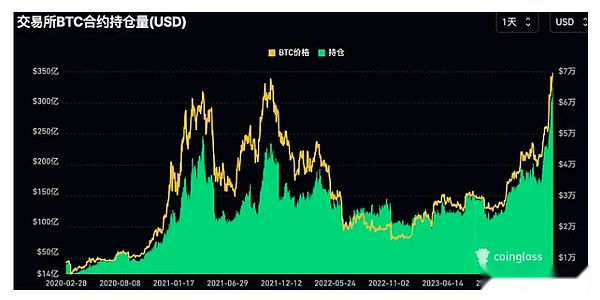
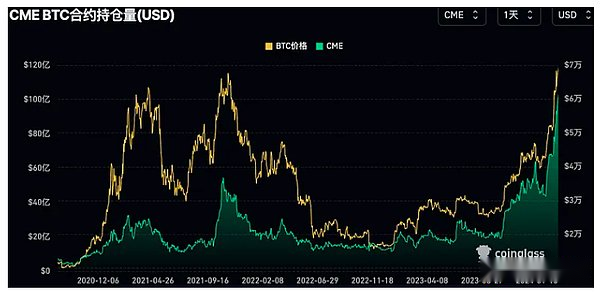
However, the holdings denominated in BTC, including cryptocurrency exchange contracts, are only 460,000, which is nearly 50% higher than the 678,000 at the historical high in November 2022, which also shows that the “traditional” currency circleMarket funds and sentiment have not yet returned to their previous extreme levels:
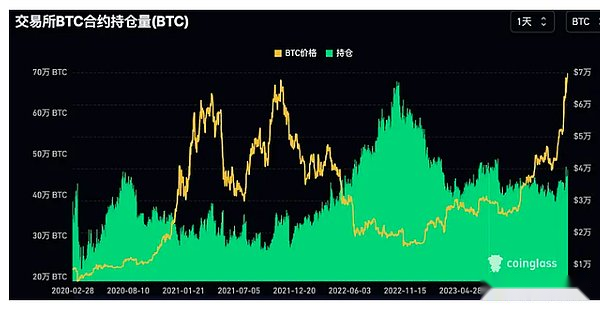
The CME holdings of Ethereum ETH also hit a record high last week, indicating that Wall Street funds are indeed interested in participating in the game of the next physical ETF.However, the scale of the new high is much worse than that of BTC.

By investor type, net shorts and net longs held by hedge funds and asset management respectively hit record highs last week:
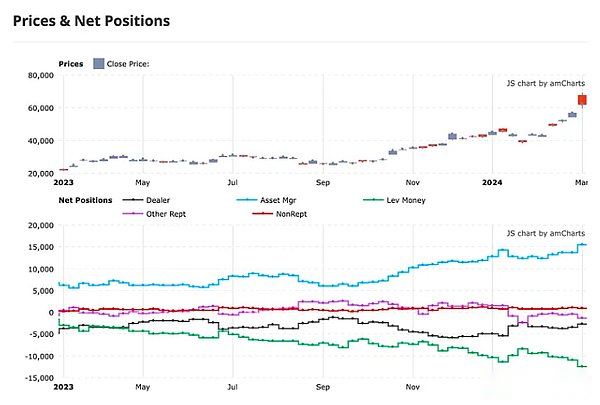
According to Goldman Sachs PB statistics, the U.S. stock market experienced net buying for the second consecutive week, with long buying volume exceeding short selling volume, with a ratio of about 1.6 to 1.The industries with the most net purchases are communications services, industry, utilities and real estate.The industries with the most net sell-offs are energy, healthcare, consumer discretionary products and materials.Communications services saw their largest nominal net buy in more than five months last week +1.2 standard deviation.
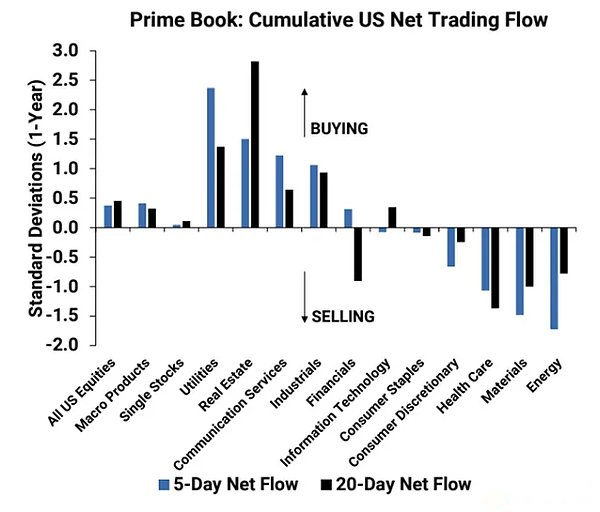
Momentum stock continues to perform strongly, and people have been worried that the stock with strong momentum will decline, but the market still shows confidence in long-term themes such as artificial intelligence, improved corporate profits, reduced concerns about recession, and cryptocurrencies hit new highs.The momentum factor counted by Goldman Sachs has risen by more than 20% this year, setting a record for the best results in the same period in history.Judging from the relative strength indicator (RSI), momentum US stocks have entered a severe overbought area, higher than the historical quantile level of 99%.

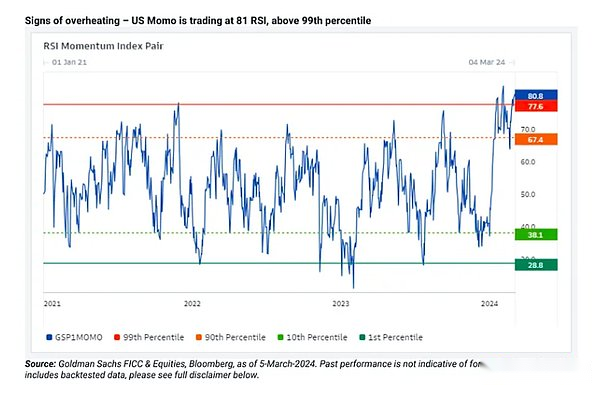
From the perspective of long and short positions, hedge funds have a strong preference for momentum factors and growth stocks, and the degree of crowded trading has hit a record high:

Large growth stock positions have entered the 96 percentile of history in 2009:
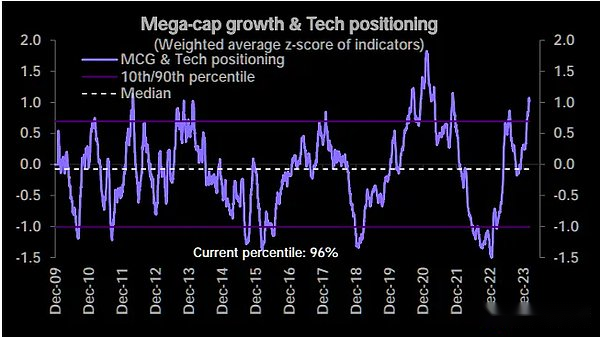
According to the EPFR statistical caliber, funds flowed sharply into money funds, investment-grade bond funds and stock funds, record-breaking into cryptocurrency funds, and out of technology and energy funds.
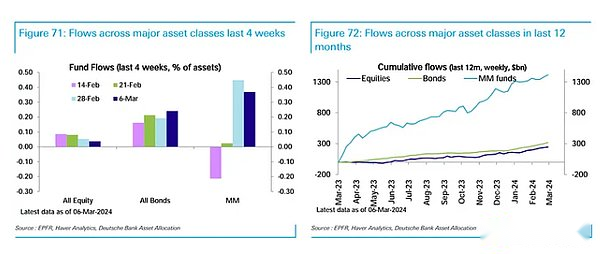
Tech fund outflows a record $4.4 billion, ending two-month inflows

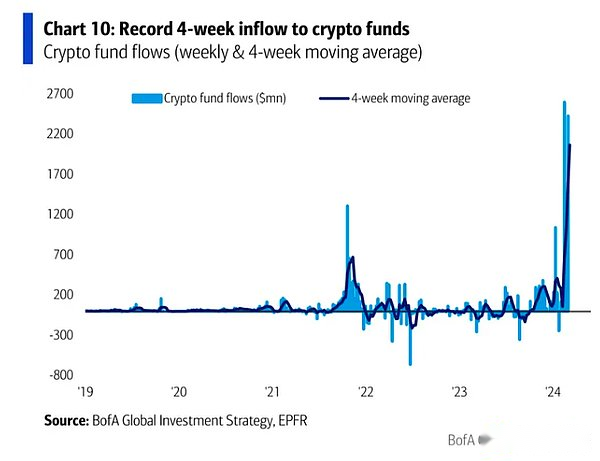
Chinese stocks continued to surge in $3.8 billion last week after a brief week of outflows
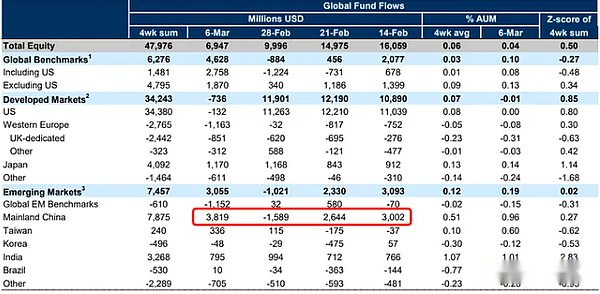
The positions of subjective investors remain basically unchanged, while the positions of systemic investors have slightly decreased:
CTA fund positions remain flat last week, at the historical 90 percentile
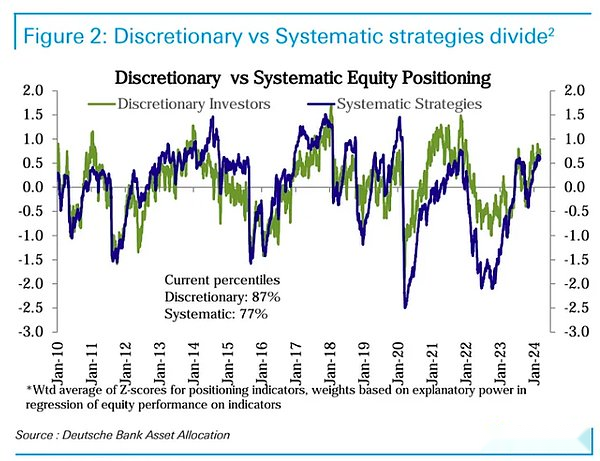
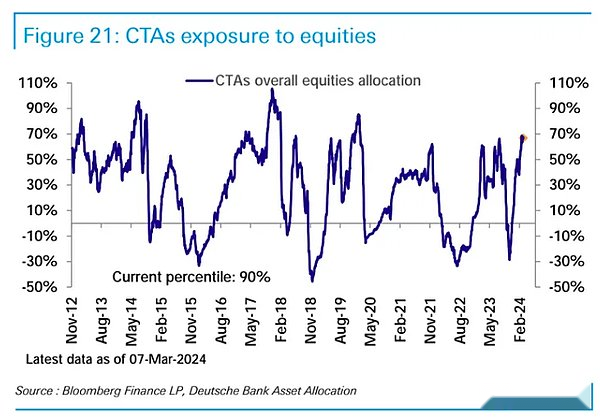
Net long Nasdaq futures fell for the third consecutive week, down to last fall’s level:
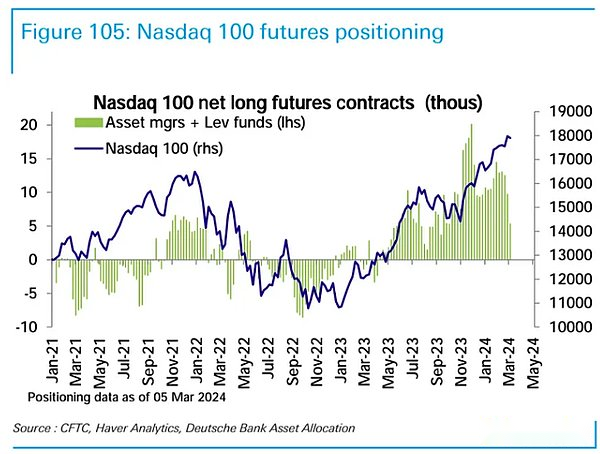
The short selling of hedge funds is mainly caused by short selling, and the current short selling level is close to the highest level in the past three years:
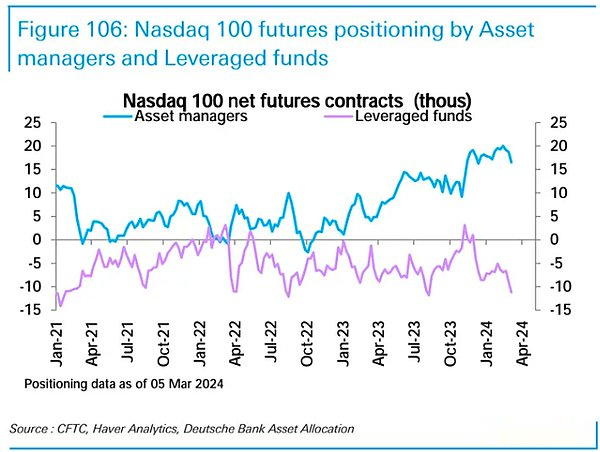
The impact of the election
Of course this coincides with the halving cycle in the past three presidential elections, so in the 2012, 2016 and 2020 U.S. elections, Bitcoin’s average return rate in those years was 192%, and Bitcoin rose every yearMore than 100%.So based on 192%, we start with $40,000 this year, and Bitcoin can reach $125,000 by the end of the year.
Trump is currently leading the polls, and if wins, possible monetary and economic policies include:
-
There was no last large-scale tax reform
-
Emphasize “protectionism”, increase tariffs, and expand trade war (bad stock market)
-
Relax regulation in the financial and environmental sectors (benefiting the stock market)
-
Trump may put pressure on the Fed to maintain low interest rates after he is elected (benefiting the stock market)
-
The Fed hopes to prevent recession by keeping politically low-key ahead of the election (benefiting stock markets)
-
Pay more attention to suppressing inflation than ensuring employment (benefiting the bond market)
In history, Biden and Trump performed the best assets during the election period, and BTC did not join. BTC rose 400% during the Biden period and 1900% during the Trump period. Interestingly, crude oil, US dollar, and South American stock marketsThe returns of Asian stock markets and bonds were almost the same during the two presidents’ administration:
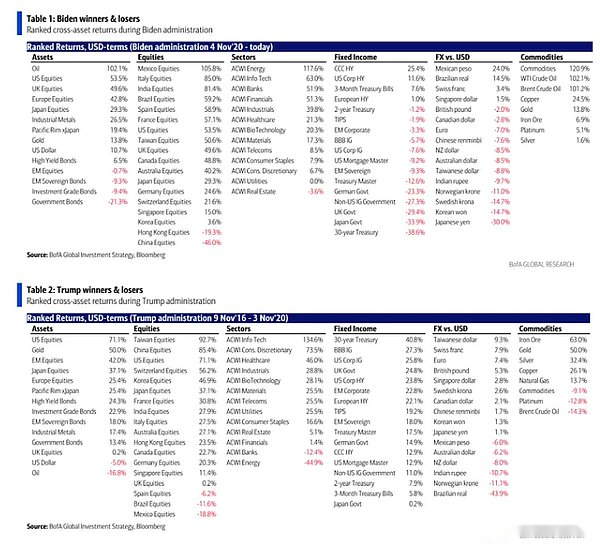
Market sentiment
Investor survey sentiment climbed to an 11-week high, one-tenth of history.
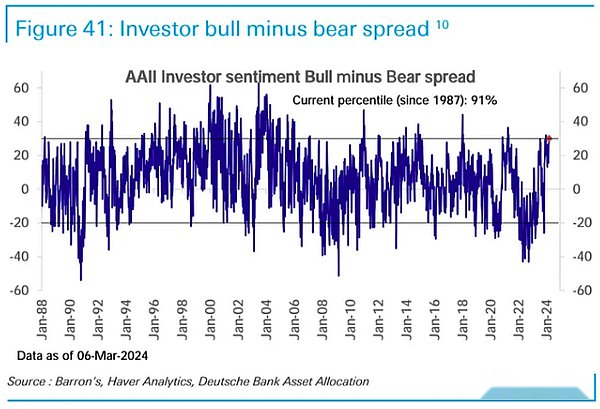
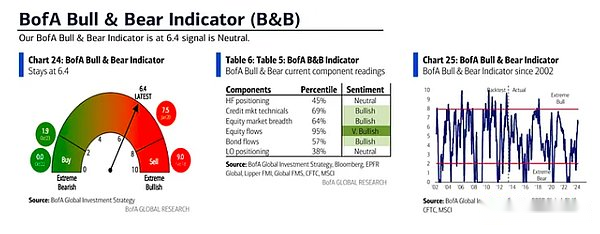
Institutional perspective
[GS: Repurchase volume is expected to increase significantly this year and next year]
At present, the scale of corporate repurchase far exceeds the scale of corporate newly issued stock financing.Goldman Sachs report expects that the scale of stock repurchases implemented by listed U.S. companies in 2024 will reach US$925 billion, a year-on-year increase of 13%.Looking ahead to 2025, Goldman Sachs expects the repurchase scale to further increase to the level of US$1.075 trillion, a year-on-year increase of 16%.Repurchase is still one of the most important support forces for the US stock market.

[JPM: The Bitcoin configuration ratio is already higher than gold?】
JPMorgan mentioned in a report last week that only 7% or $230 billion of gold invested in $3.3 trillion are held in ETF format.If the Bitcoin ETF can reach 230 billion, the market value of Bitcoin may increase from $1.3 trillion to $3.3 trillion.
But considering that Bitcoin volatility is 3.7 times that of gold, Bitcoin should account for a lower proportion of its portfolio.Simply use $3.3 trillion/3.7 = $0.9 trillion, corresponding to the price of Bitcoin is $45,000.So the current price of more than 60,000 means that the implicit allocation of Bitcoin in our portfolio has exceeded that of gold.
Still using the so-called “vol ratio” (volatility ratio), the market value of gold ETFs is divided by $230 billion by the volatility ratio of $3.7 = $62 billion.The author believes that this is an asset management goal that Bitcoin ETFs can achieve conservatively.It has now reached 52 billion.








